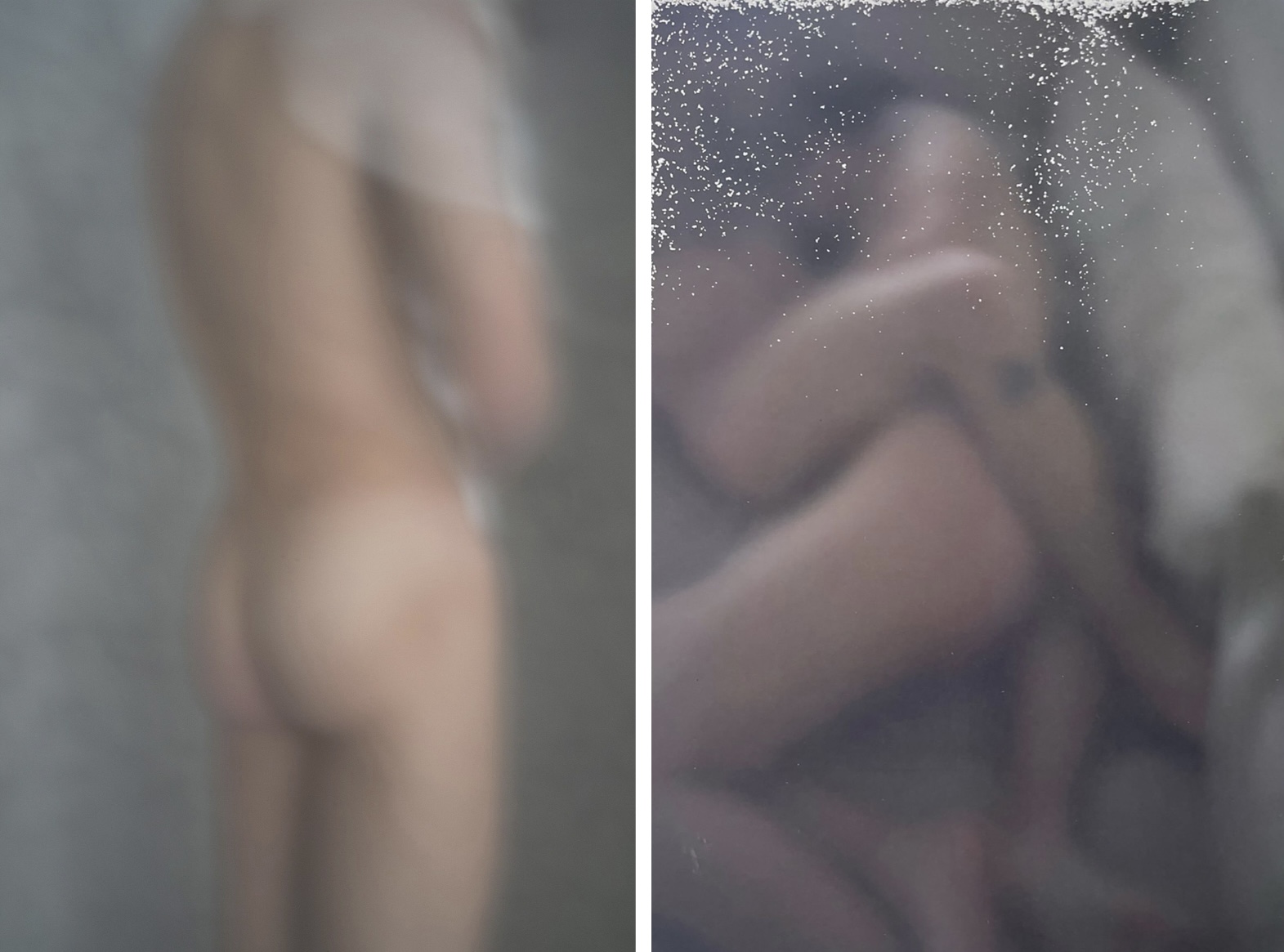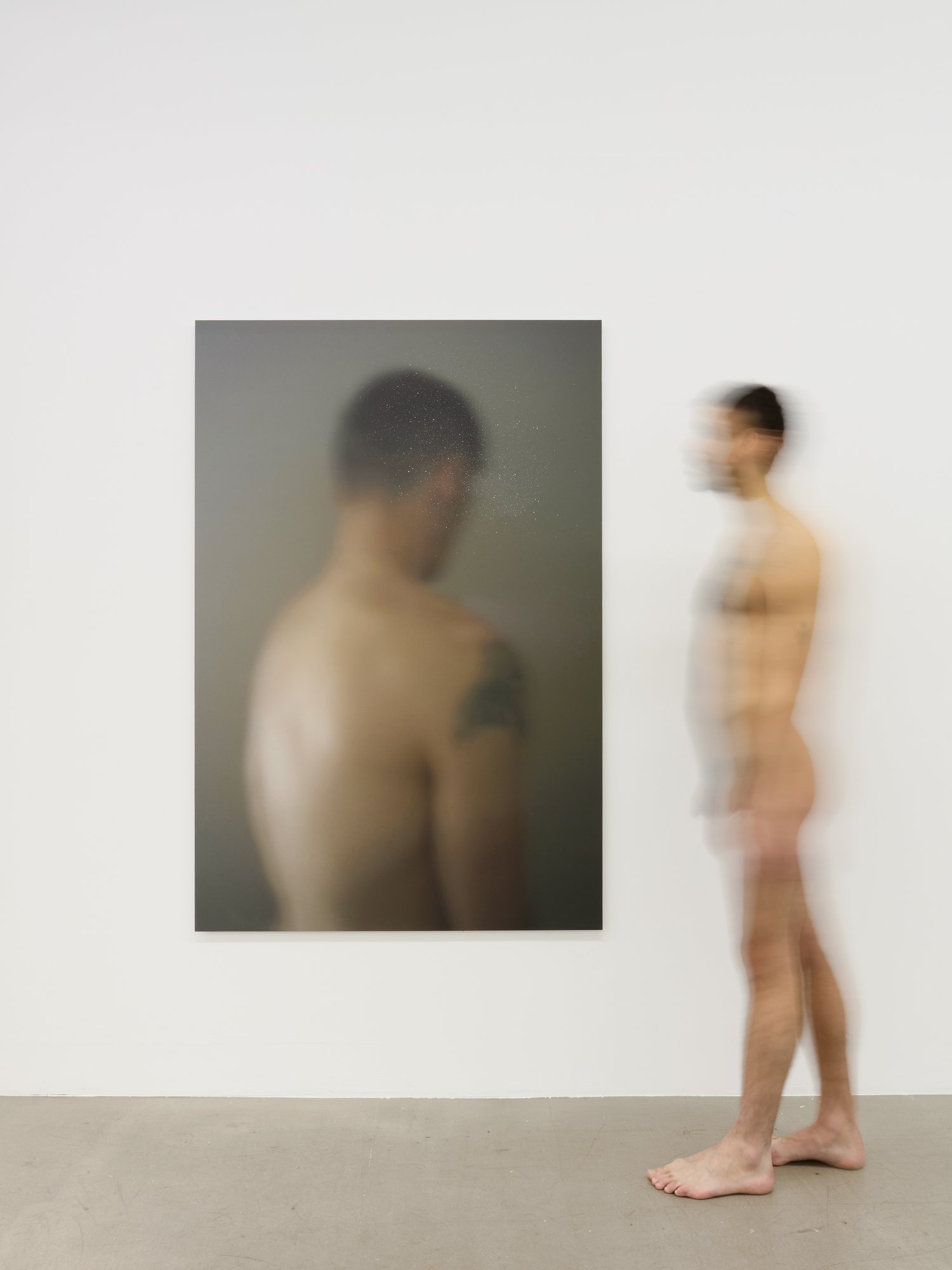04 march 2025, Emily Van Driessen
Björn De Feyter at Base-Alpha Gallery: blurred bodies, tangible memories
In his exhibition 'La douceur est essentielle' at Base-Alpha Gallery in Antwerp, Björn De Feyter (b. 1976, Antwerp) brings together different worlds: his father’s background as a house painter and his own practice as a photographer. His work moves along the boundary between painting and photography, between personal memories and distant encounters. Through an intuitive approach to material and image, he explores how the physical traces of the past intertwine with the fleeting aesthetics of the present.
The materiality of painter’s cloths
A central element in Björn’s work is the black protective sheets he discovered through his father. Originally, these were industrial offcuts from Agfa Gevaert, used by his father to protect floors and furniture while painting. “I started numbering and photographing all the pieces that were still around,” Björn explains. “They were never meant to be art, but their texture and signs of use make them intriguing.”
His fascination with these sheets stems not only from their personal connection to his father but also from their aesthetic power as readymades, functional objects that take on new meaning in an artistic context. “I simply find them beautiful, even though they were never intended to be.”
In the exhibition, the sheets serve two functions: on one hand, they form the basis of an installation; on the other, a photographed fragment is framed and displayed on the wall, giving it a painterly quality.

Björn De Feyter, Jean-Sébastien, 2024, Base-Alpha Gallery
The aesthetics of soft focus
Photography is another key pillar of Björn’s practice. He works with a self-built camera obscura, a technique where light enters through a small opening to project an inverted image. In his case, he crafted the lens himself and works digitally, contributing to the soft, blurred quality of his images. “A sharp image immediately gives away all the information. I want the viewer to discover something, to leave space for imagination.”
Björn then applies a thin layer of white pastel, paint, filler, and other materials to the prints, creating a subtle connection to his father’s painting practice. “My father’s materials quite literally seep into my images.” His choice of paper also plays a role in how the images take shape: for larger works in the exhibition, he opted for coarse-grain paper to create a more tactile experience.
The decision to present some works not on the wall but on wallpaper tables is equally intentional. “I find that the stillness in my photographs fits well with this choice,” he explains. By displaying them horizontally, he encourages a different way of looking. The gallery has even provided a chair, allowing visitors to sit and experience the works in a more contemplative way.

Björn De Feyter | Maxime, 2023 | Karim & Alexis, 2022 | Base-Alpha Gallery
Intimacy and distance
One striking tension in Björn’s work is the way he balances intimacy and distance. His nude portraits, often taken in Paris, feature models he barely knows, yet the images convey a certain sensitive closeness. “I often meet people through mutual connections. Some models already know each other, while others don’t at all. It creates a fleeting moment of connection.” The soft focus and painterly effect dissolve individual identity, while the physical presence of the body remains central.
His choice to work with nudity developed gradually. Originally trained as an architect, Björn later transitioned to photography. At first, he was fascinated by blurred images, experimenting with soft focus as a way to direct the viewer’s gaze. When he photographed a person for the first time, he realised that nudity worked seamlessly with the gentle, unfocused effect he was pursuing. The combination of fragile corporeality and elusive imagery has since become a defining aspect of his work.

La douceur est essentielle, Base-Alpha Gallery
